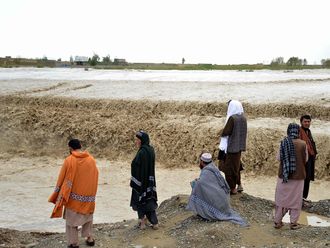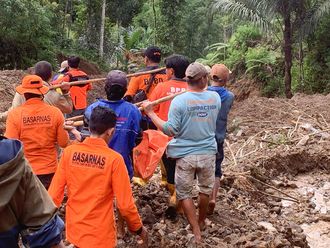
Before diving as deep as 230 feet under the sea, the Bajau people put on a pair of wooden goggles. They pick up a set of weights. Then, they take one very big breath.
And they hold it for five minutes or longer.
Commonly called Sea Nomads, the indigenous Bajau people have lived for thousands of years off the coast of Southeast Asia, near Malaysia and the Indonesia archipelago. They commonly live in houseboats, spending hours each day hunting fish or other sea creatures underwater. For centuries, their extraordinary free-diving abilities mystified scientists, as the source of the Sea Nomads’ intuitive breath-holding talents remained unknown.
But now, a group of geneticists and biologists from the University of Copenhagen and University of California, Berkeley, among others, believe they finally have an answer: The secret lies in the spleen.
Findings published in the journal Cell revealed that the Bajau people may have developed a genetic advantage for diving thousands of years ago via natural selection, as evidenced by their abnormally large spleens.
What’s the spleen got to do with it?
When we dive into the water, or even dunk our heads into a barrel to bob for apples, our bodies activate what’s called the “diving response” as we hold our breath. The spleen plays a key role in that process because it is in charge of storing red blood cells. During the diving response, the spleen contracts, then injects oxygenated blood cells into the circulatory system, acting as the fuel partly responsible for allowing us to hold our breaths. The larger the spleen, the longer we can dive, the study hypothesised.
The spleens of the sea nomads were found to be approximately 50 per cent larger than spleens the researchers measured in other nearby indigenous people, the Saluan. The Saluan are ancestrally similar to the Bajau, Fernando Racimo, an assistant professor at the University of Copenhagen, said.
“The Bajau have this subsistence that depends on marine foods, and they’ve been known to have this lifestyle for more than a thousand years,” Racimo said.
“They’re pretty incredible: They can dive for very long periods of time for more than 70 metres, with nothing but a set of rustic wooden goggles and a set of weights, nothing like the equipment we would use today. The Saluan diverged from them about 15,000 years ago, and they are not known to have this marine lifestyle. So the idea was to contrast these two populations with similar ancestries.”
The science of the spleen
The study’s lead author, Melissa Ilardo, from the University of Copenhagen’s Centre for Geogenetics, went to Indonesia to meet the two communities, bringing a portable ultrasound with her to measure their spleens. Once the Bajaus’ spleens were found to be significantly larger, the question became, why?
“We wanted to see if there was some difference in their genomes that could explain this,” Racimo said.
Ultimately, he said, there was.
After sequencing the genomes of a few dozen Bajau and Saluan, the researchers found that the Bajau had much higher frequency of a variant of specific gene, called the PDE10A, associated with spleen size. Increased thyroid hormone levels in the Bajau are believed to play a significant role as well, the study says.
“This gene existed before the Bajau, because the Saluan have it too,” Racimo said. “But once they diverged from each other, at some point in history, it became advantageous for Bajau individuals to have this after the Bajau adapted to this particular lifestyle. Individuals who had it tended to survive more than others, or maybe they had more children. The fact that both Bajau divers and non-divers have the large spleen points to the fact that this is something they have from birth rather than something they acquired through experience over time.”
There may be other factors too
Other scientists who were not involved in the research said that it’s still possible that other adaptations may be at play in the diving capacity of the Bajau.
“The lung chest wall could become more compliant.” There “could be some looseness that develops over your training. The diaphragm could become stretched. The abs could become more compliant. We don’t really know if those things occur,” said Richard Moon, who studies body response to high altitudes and extreme depths at Duke University School of Medicine.
The study pointed out that genetic mutations have affected various other populations of people who live in extreme conditions around the world. Several studies have documented how people in Tibet, for example, seem to have undergone natural selection to adapt to hypoxia, an oxygen deficiency due to high altitude.
Discoveries explaining these mutations, Racimo said, go a long way in helping us understand how we may continue to adapt to extreme conditions. “We’re still evolving,” Racimo said. “Evolution hasn’t stopped at any point in time.”












